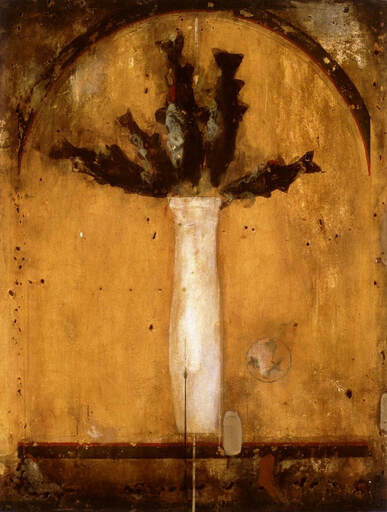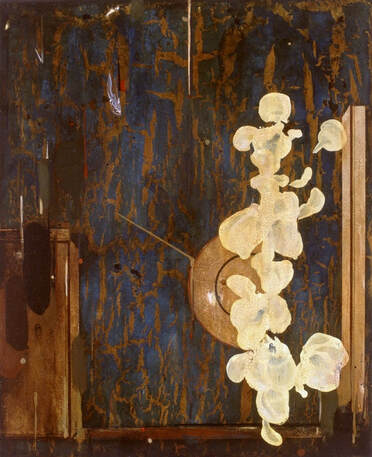Selected Reviews
Young’s Paintings Look Backward and Forward
Chicago Tribune, October 12, 1990
- David McCracken
|
Young’s Painting Look Backward, Forward
Andrew young has the Rotary Club to thank for the look of his egg tempera painting at Betsy Rosenfield Gallery: moody still life/abstractions with a surface patina like that of quattroconcto Italian artists. A few years ago, Young was studying microbiology at Berkeley and keeping up a covert art habit. At the time, he said, “I was too afraid to override the respectability of a career as a scientist.” But encouraged by a relative who was herself an artist, he applied for a Rotary art scholarship—and won it. He soon found himself in Siena, where he absorbed Renaissance art for a year and abjured microbiology. “As opposed to a museum, Sienese art—its color and sensibility and religion—seemed to be a real living and breathing thing,” he said. “I returned with confirmed confidence and switched my emphasis to philosophy and art history, thanks to the Sienese artists like (Simone) Martini and Duccio that I’d be so inspired by. “In Berkeley, I found a man who knew both fresco and egg tempera technique, and I learned it in a very orthodox way. Then I personalized it by sort of abusing it in unorthodox ways by experimenting. I wanted to generate that antique patina not to recreate archeology or revere art history in a sentimental or nostalgic way, but to embrace that look and use it to address our process of identification or recollection.” |
Five Fish Feeding, 1990
Egg tempera on wood panel, 35.5 x 27.5 in. |
Young has attempted to do that by combining recognizable aspects of specific styles in new ways to create sometimes tantalizing hybrids. All of the paintings in this show offer the dusky sepia tones and cracked surface of “antique” painting, yet for subject matter they draw on later idioms such as still life, perhaps with a dash of Oriental influence. The artist further complicates his imagery in some of these works by breaking up the recognizable aspects of still life and deploying them in new, almost entirely abstract arrangements.
|
Sentinel, 1990
Egg tempera on wood panel, 28 x 23 in. |
In a work such as “Sentinel,” for instance, a background pattern could be read as peeling wallpaper, and the translucent, ghostly “floral” figure on the right seems to float on the surface of the painting, becoming a purely formal element. Other pieces play with perspective in similar fashion.
Young said that he wants to make the object in his paintings “vanish, or become an apparition, in such a way that recognition is really the issue of the work. I wanted to get the simultaneously familiar and yet kind of exhausted or elusive kind of experience.” “Anyone who has viewed art brings to the rectangle on the wall some assumption of “illusionary space: It’s either landscape or some other system, for creating 3-D. These paintings become so 2-D because of the flatness of the plane in some, or the clean edges where the pigment wraps around. At the same time, you have the 3-D aspect of paint—it has cracks and bumps and grooves and incisions—so there’s an offer and a denial of assumed perspective.” |

